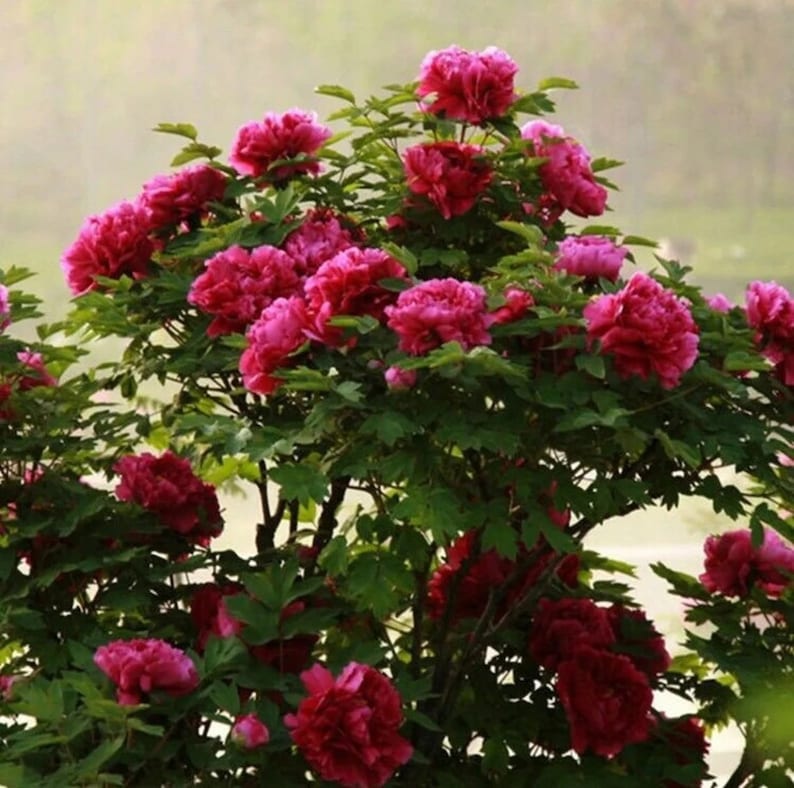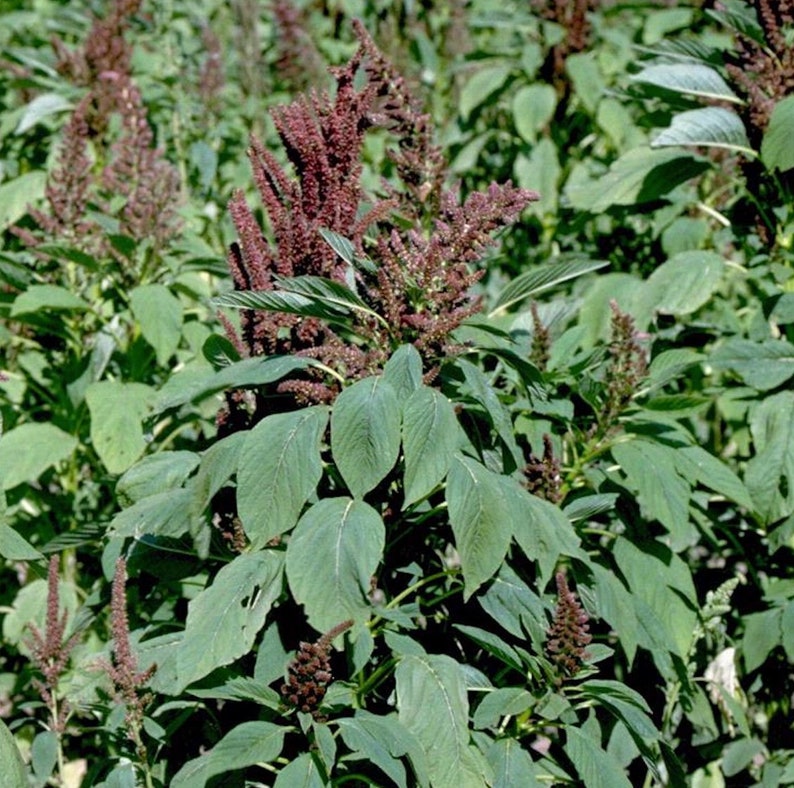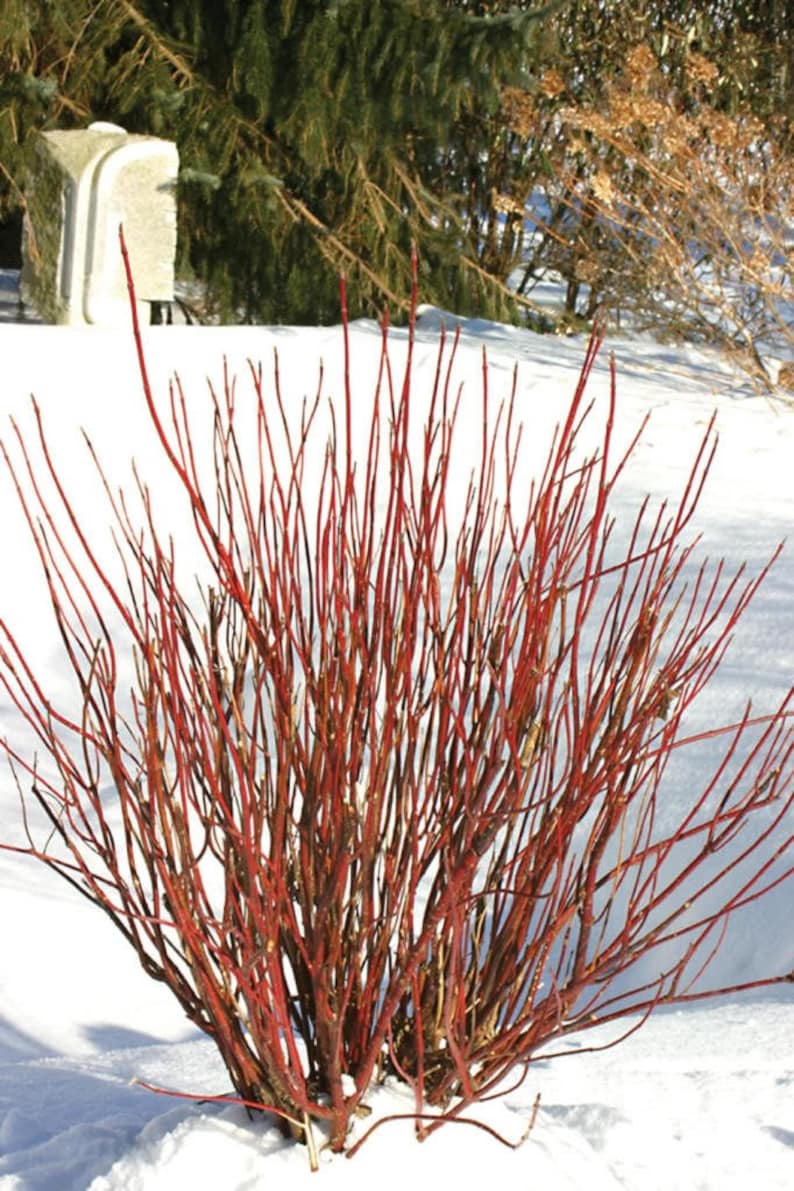Surprisingly, there are many beautiful plants with red stems.
Sometimes, these plants can be easier to identify thanks to this particularity, but be sure you are 100% sure of the species if you are harvesting from the wild.
Keep in mind that while for some of them having stems with reddish color is a defining characteristic, others only have red stems when they are young.
Some species even change stem color based on weather or light conditions.
Many beautiful plants with stems that have reddish color are cultivated as ornamental plants because of their ability to brighten winter gardens with their lively colors, but others are considered invasive species.
- Related article: Houseplant Varieties
Read on to know which species you can grow and which you should avoid!
1. Common Purslane (Portulaca Oleracea)
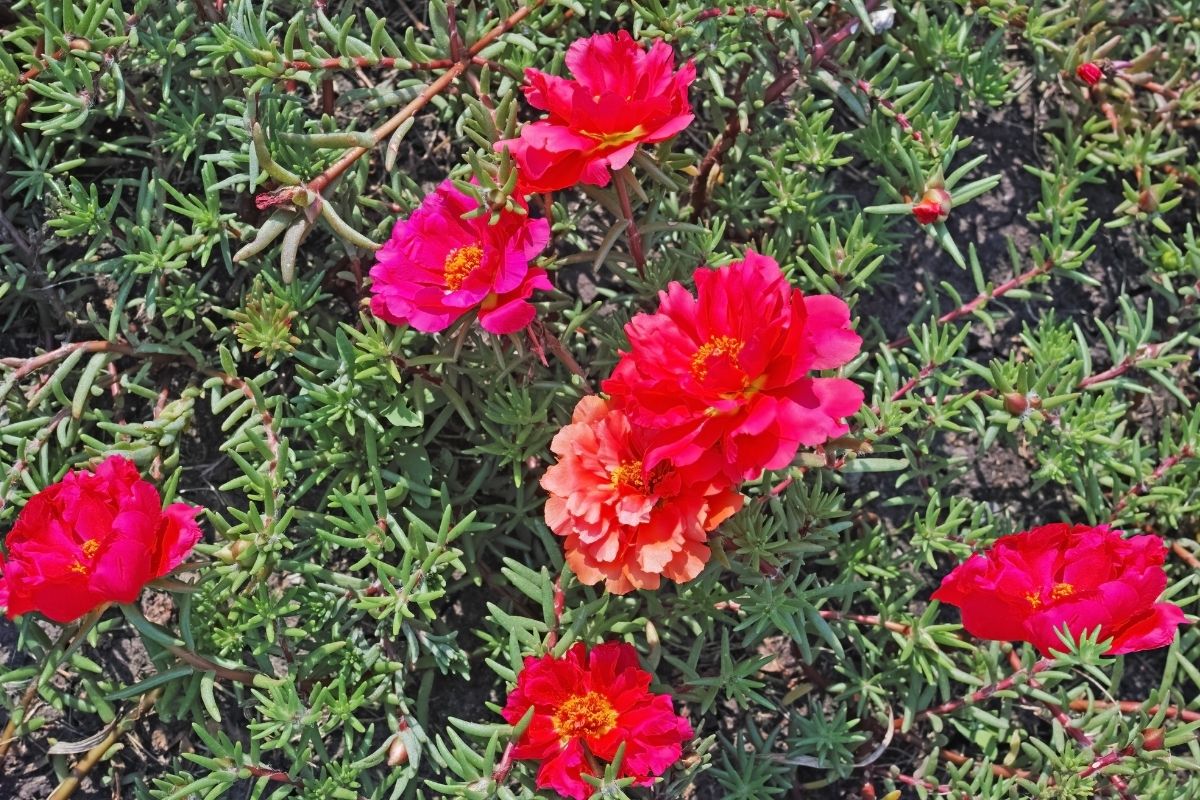
The Common Purslane is a plant type that is well-known almost everywhere in the world. This annual weed is also known as Pursley, Duckweed, Wild Portulaca, and Little Hogweed.
Common Purslane grows quickly and can cover large areas with its succulent plant stems and leaves. Its stems are smooth and have a reddish color, while it has glossy, dark green leaves.
Its attractive flowers bloom multiple times per year and have yellow, heart-shaped petals.
Much of its popularity is due to the fact that the Common Purslane is an edible plant that can be eaten both raw or cooked.
2. Peonies (Paeonia Spp.)
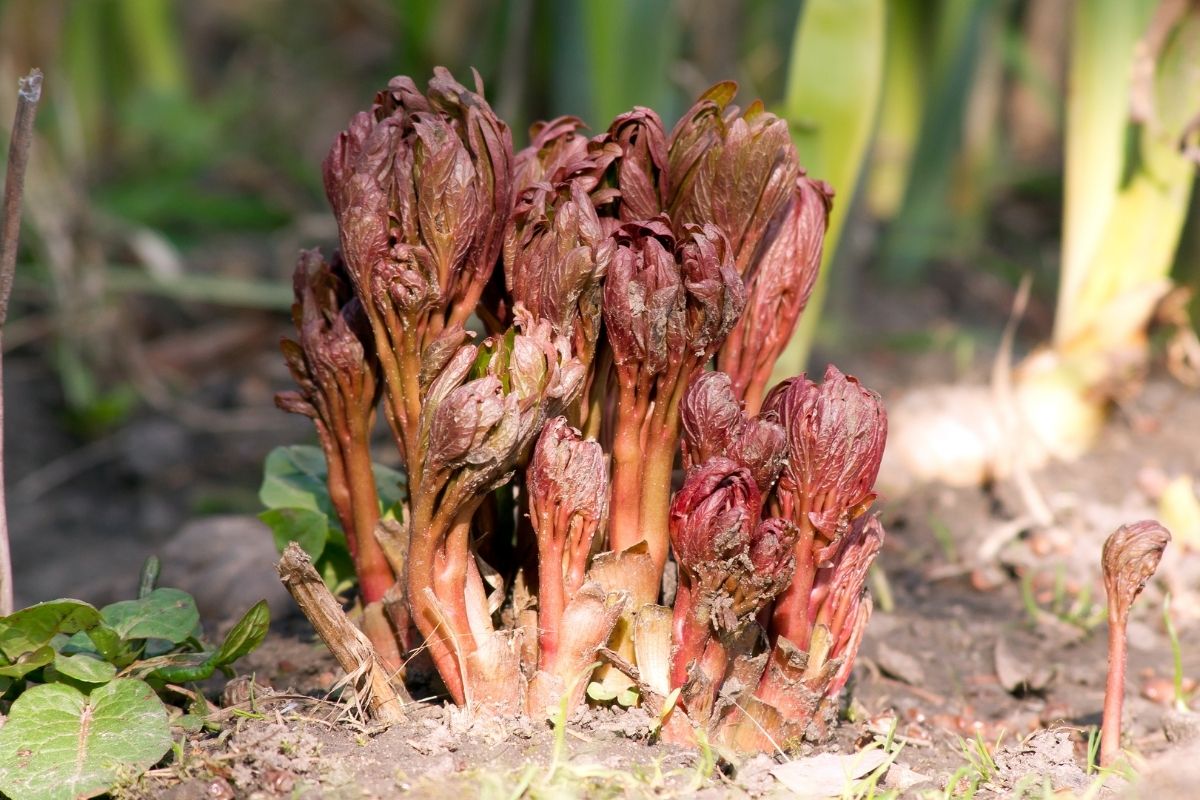
Peonies are very popular garden flowers because of their beautiful blooms and their ease of care.
There are more than 30 different species of Peonies—some of them native to Asia or Europe, and others to Western North America. The most common Peony and most widespread plant type is the Garden Peony.
Most Peonies have red stems and leaves only when they are very young. As the plant ages, the stems usually turn green.
The exception is the plant type, Balearic Peony (Paeonia cambessedesii), which maintains red stems throughout its life.
3. Pokeweed (Phytolacca Americana)
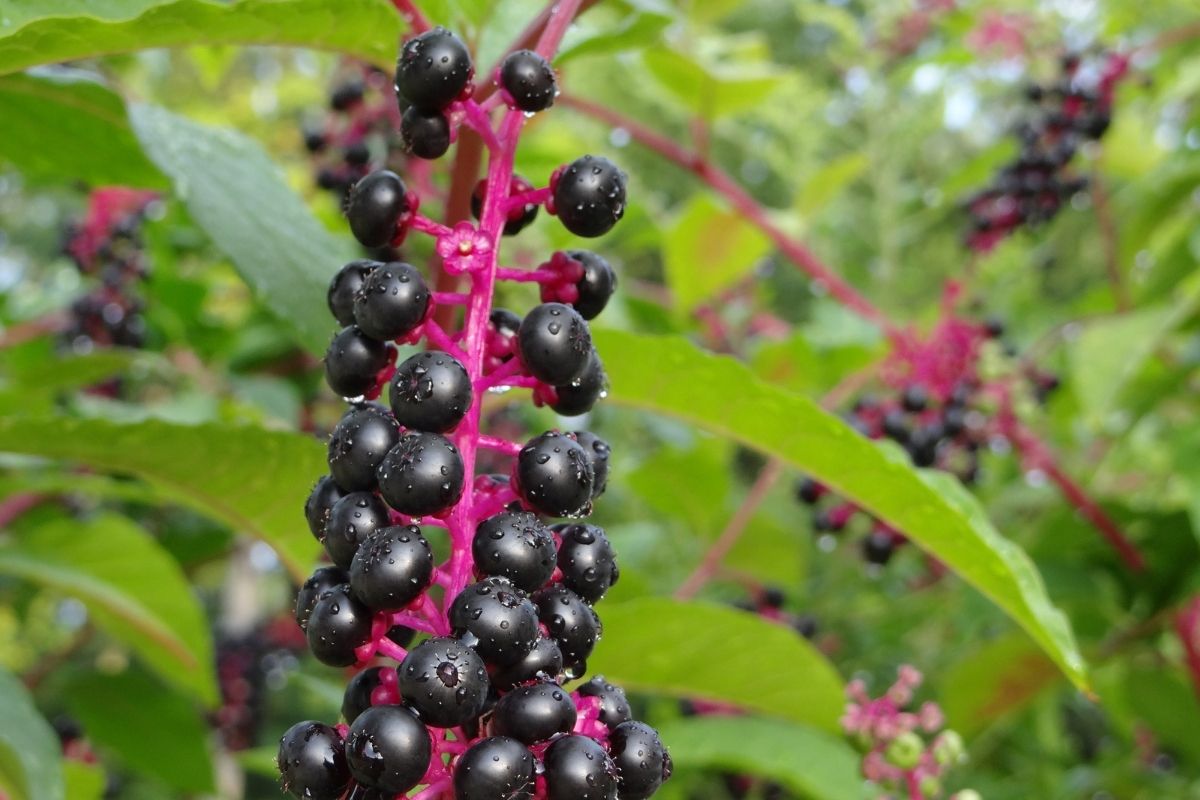
Pokeweed is a perennial plant type that is also known as Dragon Berries, Poke Sallet, or American Pokeweed.
This herbaceous plant can become quite large, reaching a height of ten feet.
Its stems are red-purple in color and quite thick, while it has lance-shaped and dark green leaves.
Pokeweed’s fruits are grape-like green berries, but they shouldn’t be eaten under any circumstance as they are not edible and contains toxic poison.
These fruits are green when they start growing in late summer and become dark purple when ripe in the fall.
Many species of birds have no problem feeding from Pokeweed fruits, and by doing so they help this plant to spread.
In many areas, it’s considered an invasive plant as it can easily supplant local flora by easily adapting to difficult conditions.
- Related article: Are Wild Berries Safe to Eat
4. The Castor Bean (Ricinus Communis)
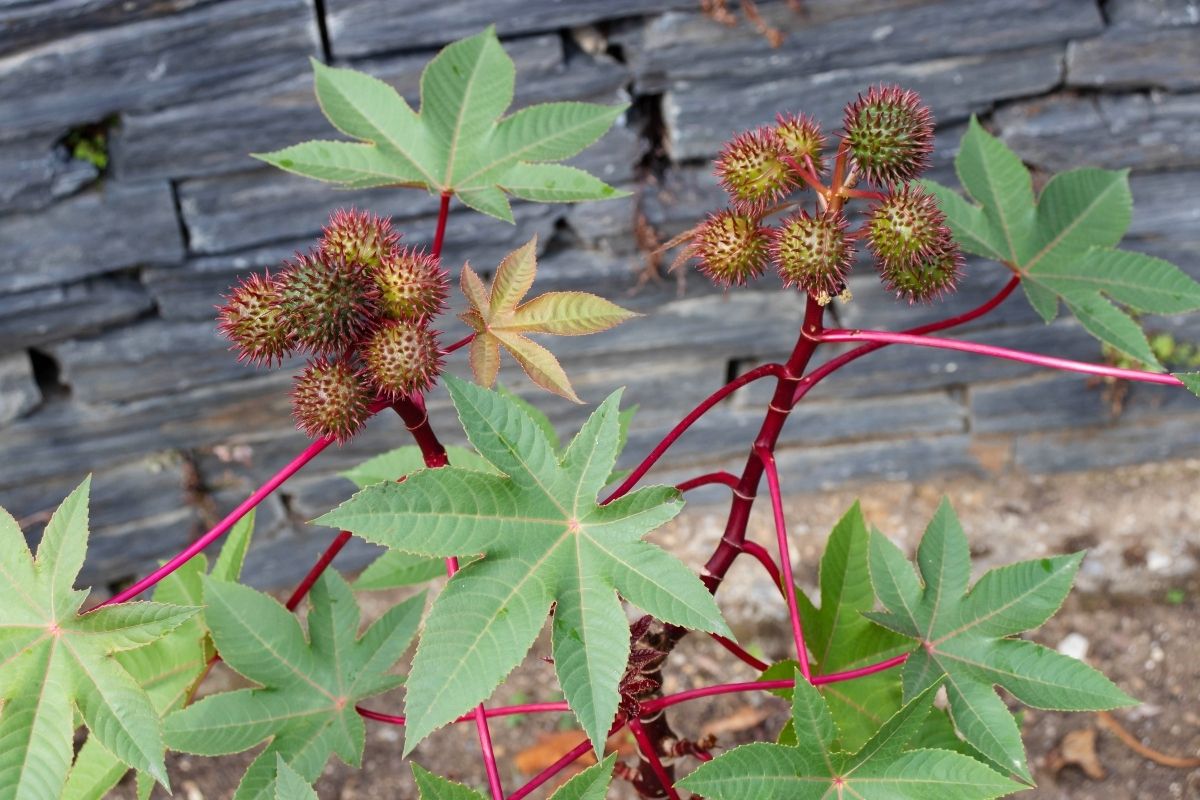
The Castor Bean, or Castor Oil plant type, is a large shrub that can look more like a small tree. It’s a fast-growing perennial that, in more temperate climates, can become almost 40 feet tall.
This flowering shrub has long, reddish stems and large, glossy leaves. The foliage can take different colors depending on the variety and the plant’s age.
The Castor Bean produces flowers that turns into spiny fruits. These can be green or red-purple and contain bean-like seeds rich in ricin, a highly toxic compound.
Just a few of these seeds can be enough to kill an adult man, making the Castor Bean one of the most dangerous plants in the world.
5. Lady’s Mantle (Alchemilla Erythropoda)
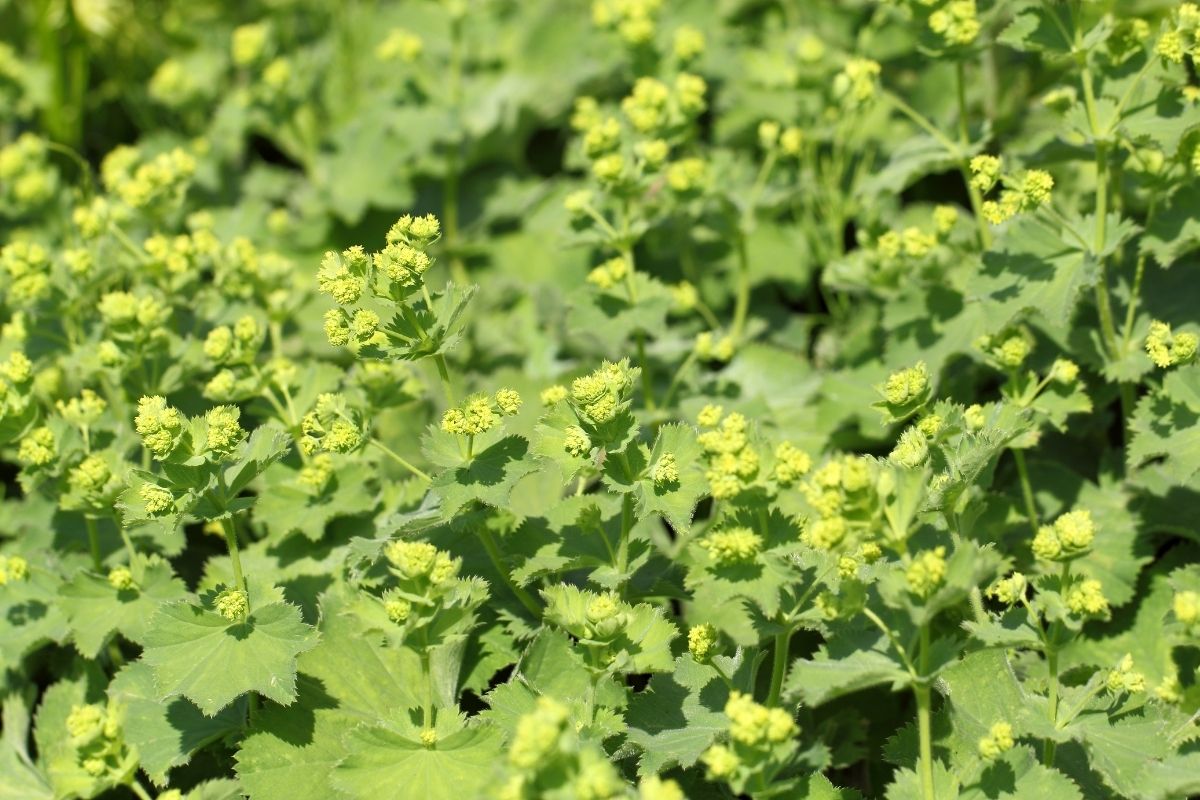
Lady’s Mantle is a perennial plant type with interesting scalloped leaves and red stems.
The term Lady’s Mantle is actually used to refer to the whole Alchemilla genus, with its 700 species, most of them with green stems.
Lady’s Mantle is an easy plant to grow, being quite tough and adaptable. This has made it a popular garden plant, together with the attractive way that little drops of water cling to the edges of its leaves after a rainfall.
If you want your Alchemilla to really thrive, it will need cool temperatures, fertile soil, and shade. If the weather is not too warm, Lady’s Mantle can also grow well in full sun.
6. Himalayan Balsam (Impatiens Glandulifera)
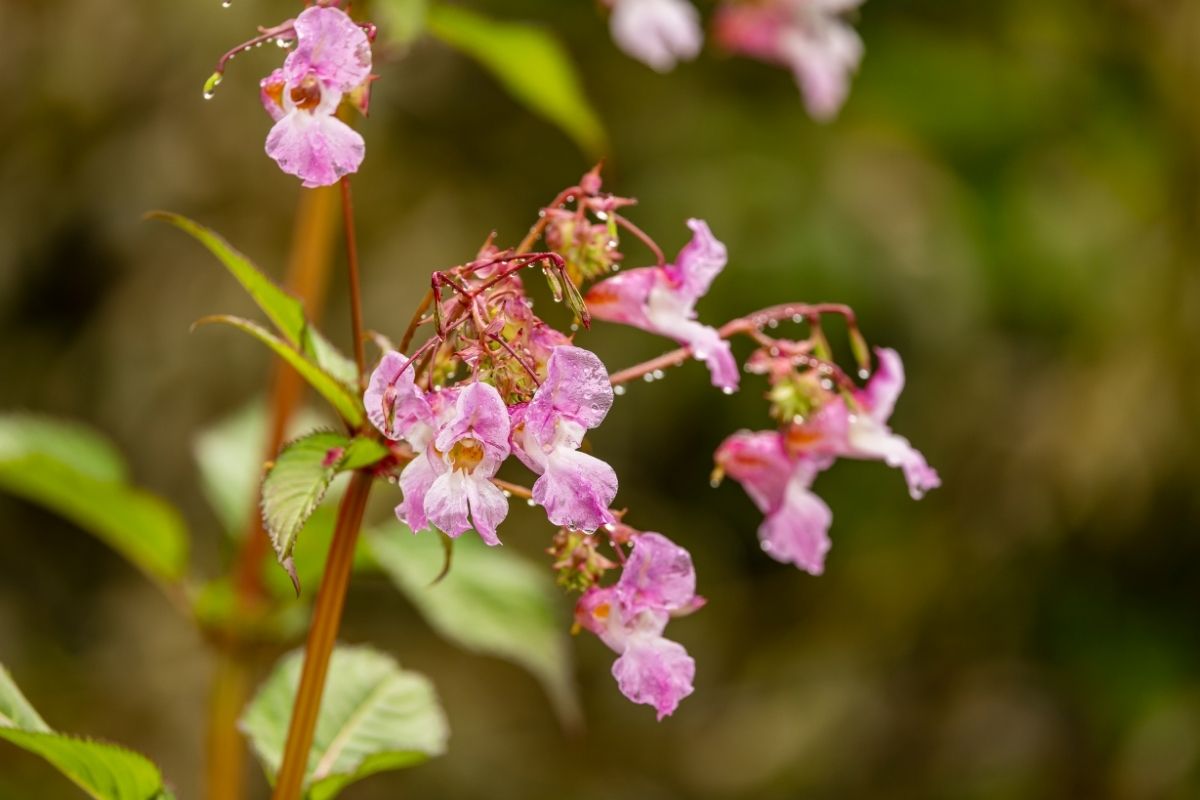
Himalayan Balsam is a large annual plant type with beautiful flowers native to the Himalayas and is sometimes referred to as Bobby Tops or Copper Tops.
It is now common throughout much of Europe and North America, where it was often introduced by people as an ornamental plant.
Unfortunately, it has spread much more than anticipated, also because of its extremely efficient explosive seed dispersal mechanism. When disturbed, the seed pods explode, propelling the seeds up to 23 feet away from the plant.
The Himalayan Balsam grows quite quickly and can reach 6.5 feet in height.
The stems are sometimes red and sometimes green and become woody stems when mature. The foliage is lance-shaped and the beautiful flowers can be white or pink.
This plant type thrives in moist environments and can’t tolerate drought or frost.
7. Pigweed (Amaranthus Spp.)
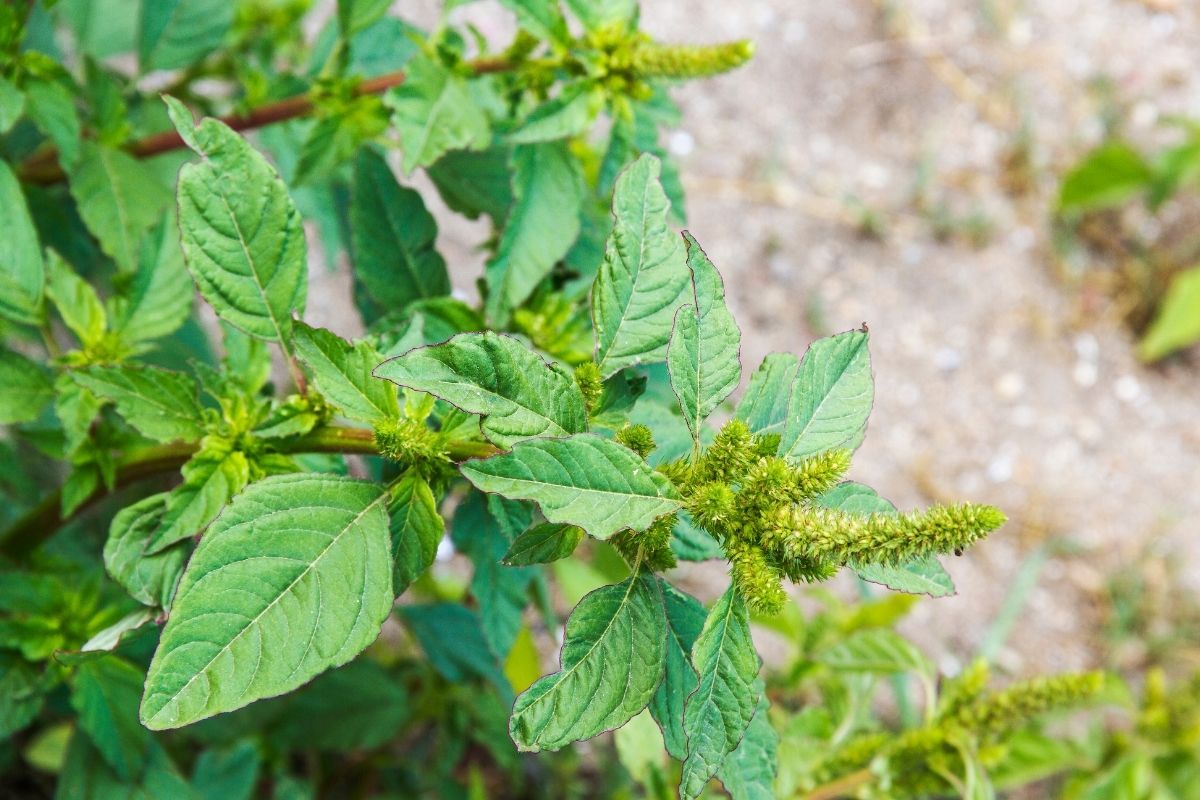
Did you know that there are more than 70 herbaceous plant species of these invasive weeds called Pigweeds that belong to the Amaranthus genus?
Most of them are edible plants that are grown for food in many countries, while others are considered ornamental plants.
Many Amaranth species have red stems, but not all of them. Some start with green stems which only become red as the plant matures. The leaves of these plant types can also be red, but also purple or green.
8. Red Osier Dogwood (Cornus Sericea)
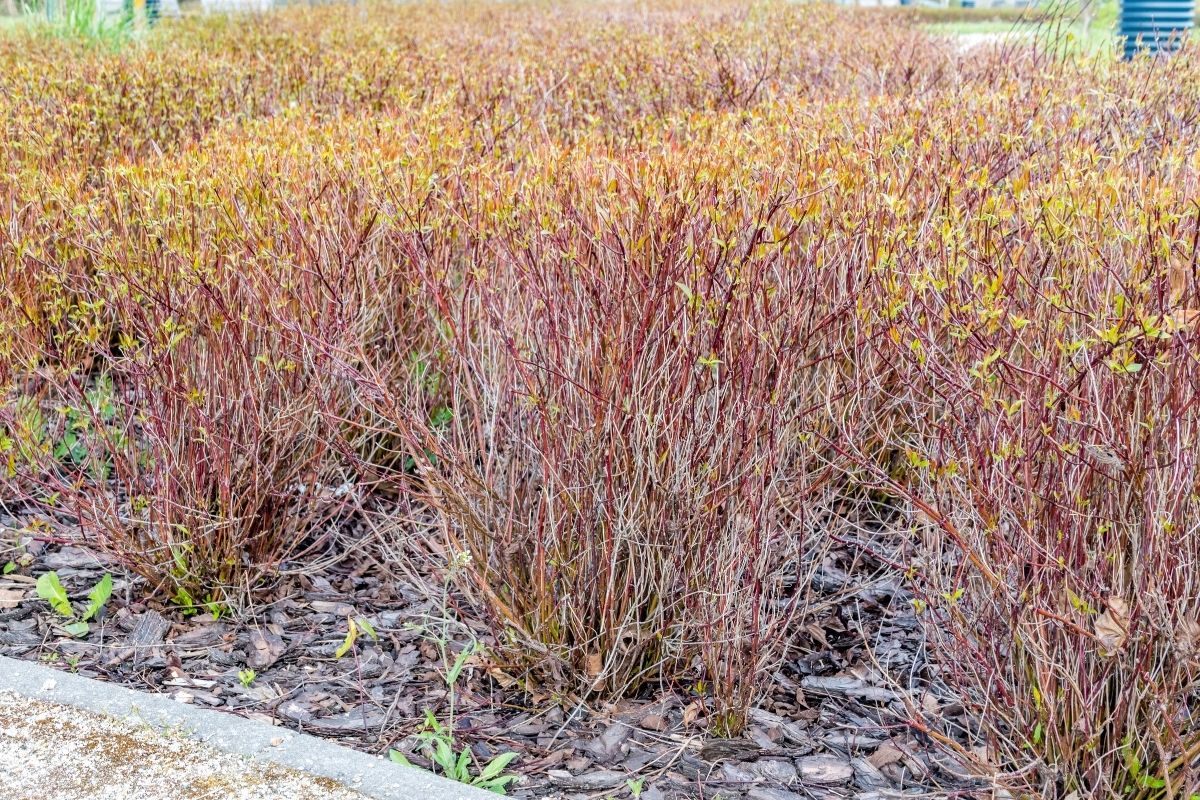
Red Osier Dogwood is a hardy plant that is known by many other names, such as Redstem Dogwood, Red Willow, American Dogwood, Red-rood, Western Dogwood, and Creek Dogwood.
It is a shrub that thrives in wet areas. Its branches are usually dark red, but when this plant typically grows in the shade, they can also be green.
The elongated leaves have red margins and fall during the winter, leaving the red twigs very visible. This characteristic has made the Red Osier Dogwood quite popular as an ornamental shrub.
9. Wineberry (Rubus Phoenicolasius)
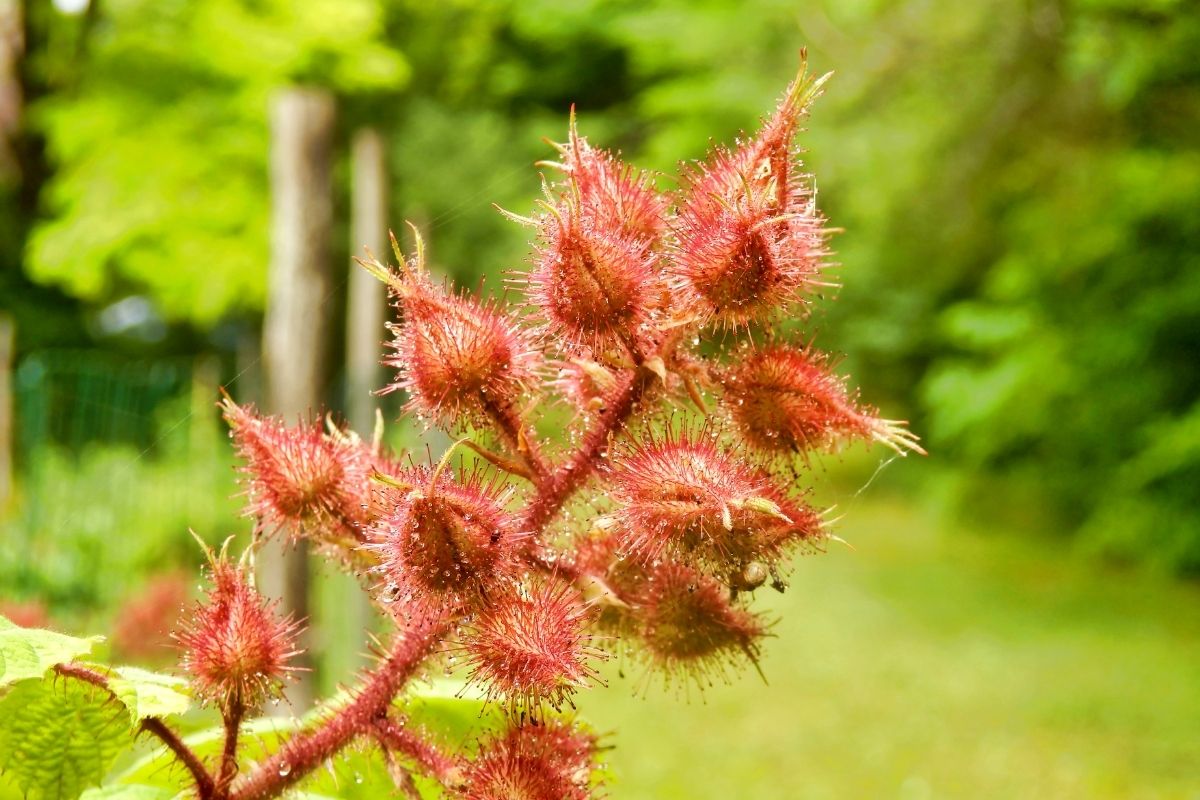
Wineberry Plants are perennial plants native to Asia but are now common in North America and Europe.
They have reddish or green stalks and large leaves that are green on top and silver on the underside. Both the stems and the leaves are covered in red hair and thin spines.
Wineberries can form thick bushes and thrive in abandoned and marginal areas, often growing very rapidly and causing problems for local species.
In the fall, they produce small red edible berries that taste a bit like raspberries.
10. Mountain Pepper (Drimys Lanceolata)
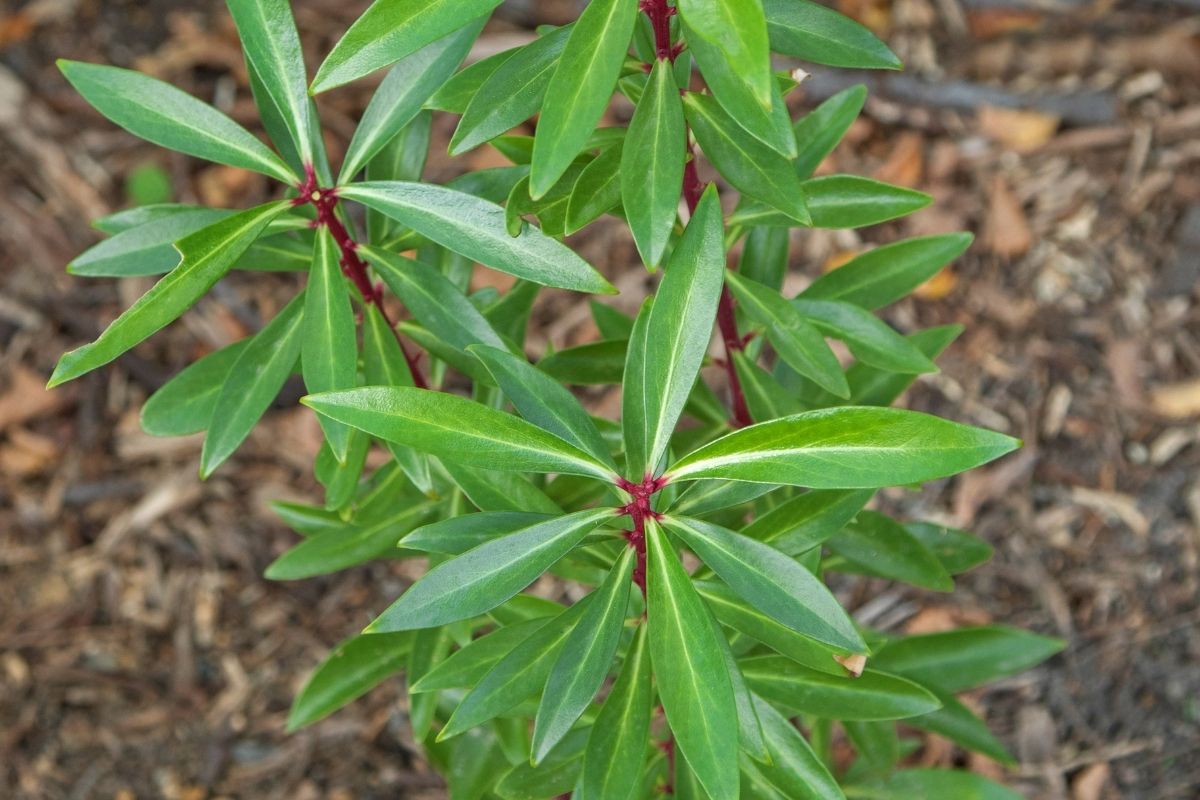
Mountain Pepper owes its name to the pepper-like aroma of its leaves and fruits, which are often used as a black pepper substitute. Sometimes, it is also called Tasmanian Pepperberry or Cornish Pepper Leaf.
Mountain Pepper is native to Australia and is an evergreen shrub.
Its stems are red and the lance-shaped leaves are dark green. The light-colored flowers bloom in the summer and turn into dark berries in the fall.
11. Elephant Bush (Portulacaria Afra)
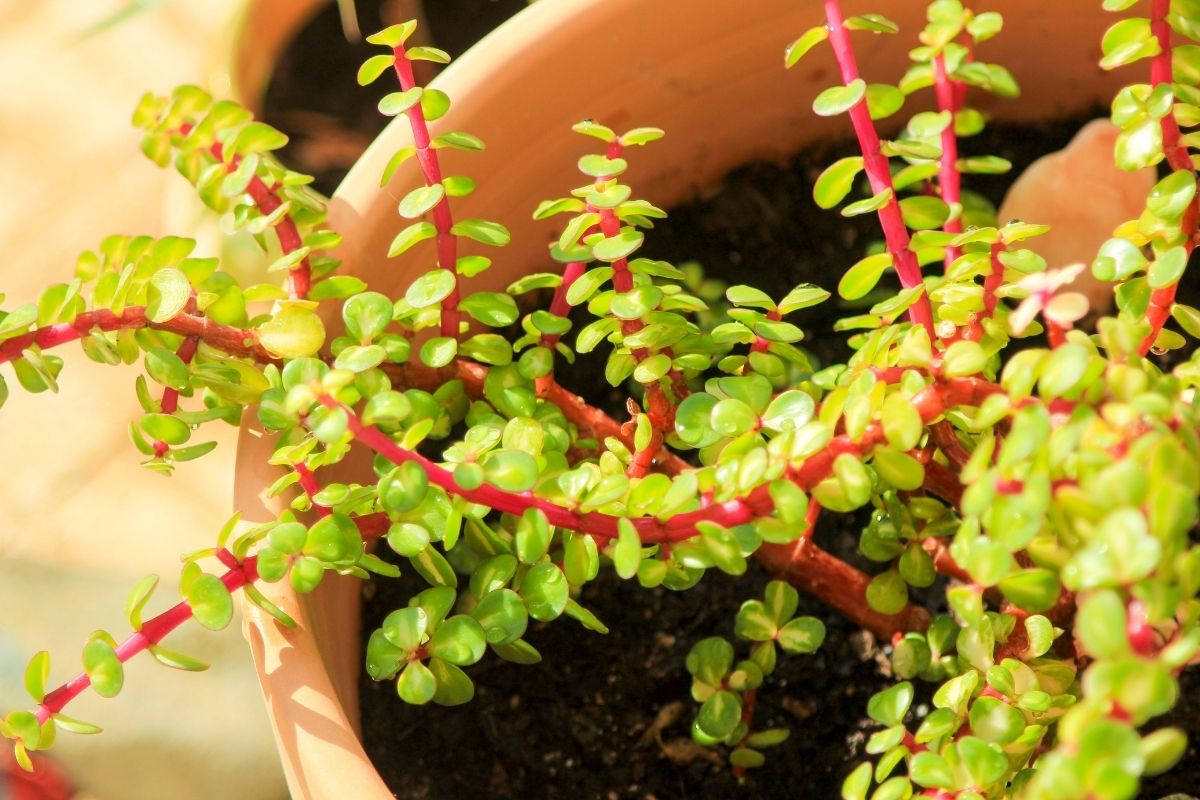
The Elephant Bush grows in the wild in South Africa, while in other parts of the world, including the US, it is used as an ornamental plant.
It’s a succulent plant with glossy leaves and stems that start as red and become more brownish as they mature.
When the plant is very young, it’s difficult to distinguish it from Common Purslane (Portulaca oleracea).
Sometimes, the Elephant Bush is grown as a bonsai. In this case, it can get confused with the Jade Plant (Crassula ovata), giving it another common name of the Dwarf Jade plant.
Elephant Bush loves sunlight and is adapted to dry environments, so it shouldn’t be watered too much.
12. Coral Bark Maple Tree (Acer Palmatum ‘Sango-Kaku’)
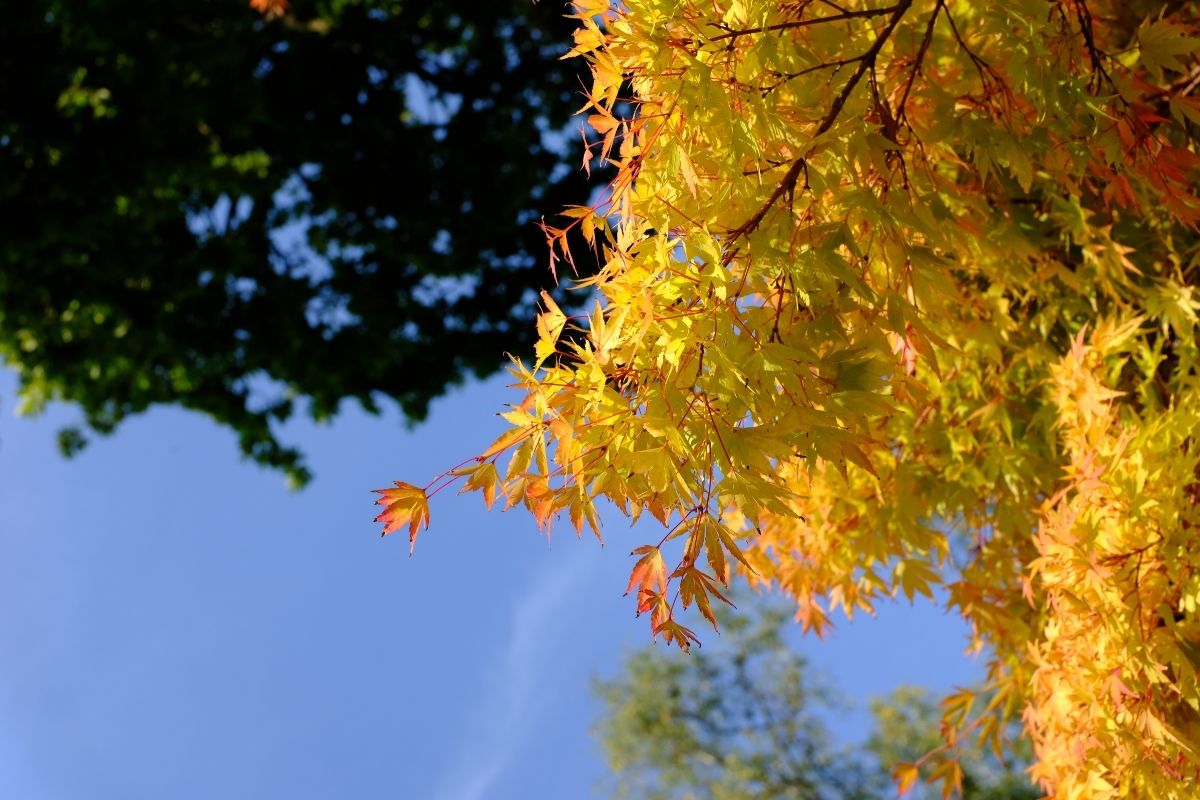
The Coral Bark Maple Tree is a deciduous tree native to Japan. It’s known for its striking red twigs and branches, which contrast with the bright green leaves.
The Coral Bark Maple Tree can reach up to 15 feet in height and requires full sun for optimal growth.
In the summer months, small, yellow flowers bloom, followed by clusters of winged fruit in the fall.
Final Thoughts on Plants With Red Stem
Red-stemmed plants add a pop of color to any garden or landscape as they are really beautiful plants.
Along with their aesthetic appeal, these common plants also offer various beneficial properties such as providing food and shelter for wildlife and helping with erosion control.
From the striking red stems of the Red Osier Dogwood to the bright red twigs of the Coral Bark Maple Tree, there are many options to choose from when incorporating plants with red stems into your outdoor space.
There’s no doubt that these plants are a great addition to any garden or landscape, offering both beauty and functionality!
Take a look at these articles to know more about plants for your garden:


